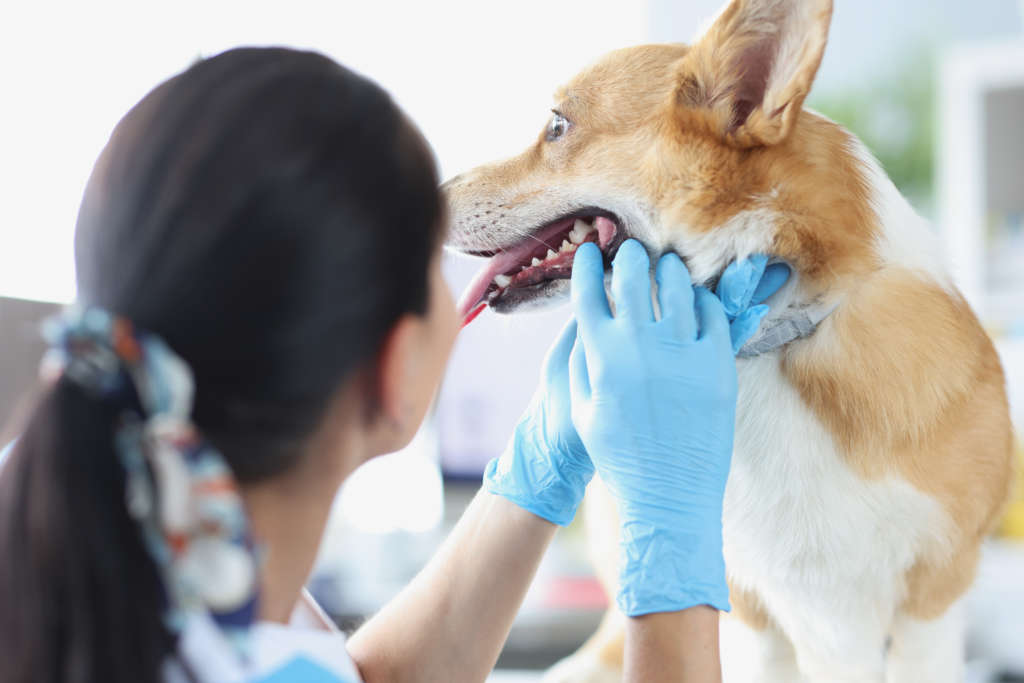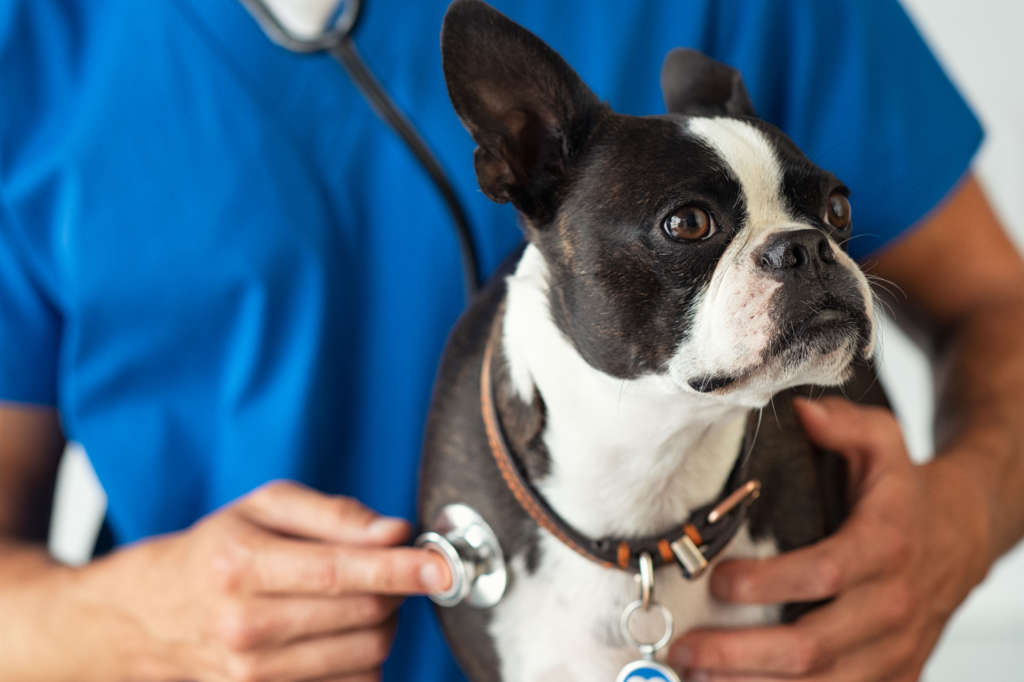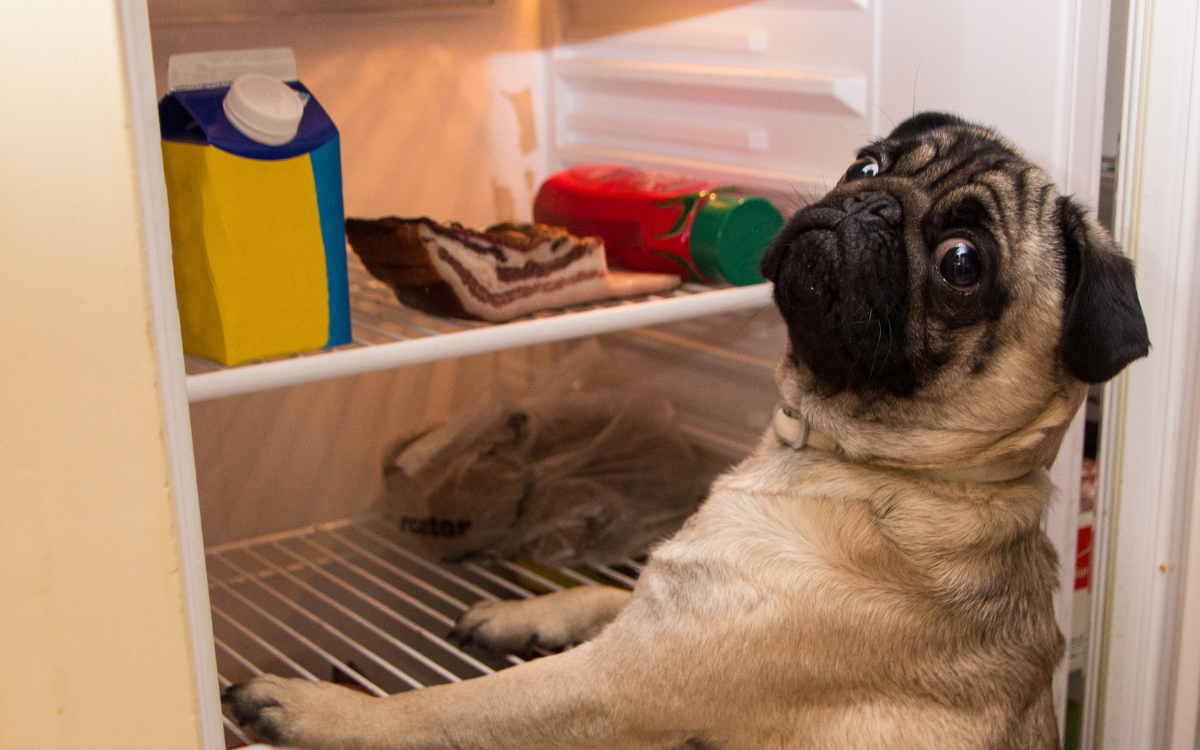It’s a fact of life: most dogs develop dental disease that requires dental cleaning in their lifetime. But why all the fuss? The effects on the mouth are easy to wrap our minds around, but other systems in the body can be affected as well. Let’s lay out what we understand about the effects of dental disease outside the mouth.
1. Eye Infections
This happens when a chewing tooth (molar or premolar) on the upper jaw gets an abscess at the root tip. As the abscess gets larger, the normally healthy bone around the tooth is destroyed to make room for the abscess. On the upper jaw, the molars and premolars are next to the maxillary sinus (a sinus cavity below the eye). When the tooth abscess gets large enough, the bone between the abscess and sinus can actually be destroyed! And once the abscess bacteria reach the sinus, they have an easy path to the eye.


Eye infections are usually noticed when excessive yellow, white or green discharge is noted from the eye. Sometimes the discharge can make it so your dog cannot open their eyes until the discharge is removed. If left untreated, it’s possible for this to lead to needing the eye removed. Yikes!
Related Article: 6 Things You Can Learn About Your Dog’s Health Just By Looking Into Their Eyes
Unfortunately, the effects of dental disease don’t stop at the eyes: many of your pup’s other organs can be at risk. How, you might ask? After all, they are so far away!
When a dog has dental disease, the tissues supporting the teeth become inflamed. This inflammation is normal: it’s a part of your dog’s infection response and serves many purposes. One of the benefits of inflammation is “leaky” vessels, which allows different immune system players to get out of the bloodstream and into tissues that need them. But there’s a downside: there is mounting evidence that this leaking allows the bacteria which causes dental disease to enter the bloodstream and get pumped throughout the body.


Looking for a proactive approach to your dog’s dental health? BARK Bright pairs an enzymatic toothpaste with specially-shaped dental chews so your dog’s pearly whites stay in tip-top shape!


Inflammation also results in inflammatory mediators. Now, when they’re attacking the disease-causing bacteria, they’re great! But unfortunately, sometimes these mediators can affect normal tissues and cause damage. The effect of dental disease on the whole body is supported by the fact that typically, lab tests improve after treatment of dental disease1.
2. Heart and Blood Vessels
Once the bacteria that causes dental disease gets into the bloodstream, it travels to the heart and can set up shop on the atrioventricular (AV) valves. When the AV valves have bacteria living on their surfaces, the valves do not function as well. Eventually, this can lead to the valve closing incompletely, which is just as dangerous as you might guess: it can result in some portion of the blood flowing backwards when the heart contracts. This can cause an emergency situation for your dog that can result in death.
This infection is called canine infective endocarditis, and out of everything we’ll discuss here, it has the strongest evidence that it is directly caused by dental disease. The same bacteria that are found in dental disease can be found on the heart valve in affected individuals1.


Intermittent infections and clotting can also be seen as a result of bacteria in the bloodstream. These infections can be difficult to identify and treat effectively without culture and sensitivity testing (read: $$$ vet bill). But they shouldn’t be ignored: untreated infections can cause many problems and permanent damage to the infected tissues.
Related Article: 14 Breeds Who Need To Watch Out For Health Risks To Their Heart
Clotting (thrombosis) can also be caused by bacteria in the bloodstream. These clots fill the vessels and prevent blood from flowing through the tissue normally. If a clot breaks off (embolus), it flows down the bloodstream until it reaches a vessel small enough that it lodges and prevents blood from flowing through at all. Depending on the location of these clots, the consequences and symptoms your dog experiences can vary widely.
3. Liver
Just like the heart, once the bacteria make it to the bloodstream they travel through the liver and can cause problems. Bacterial invasion into liver cells, and the resultant inflammation, leads to scarring and portal fibrosis. And that can cause big problems: see, the liver functions as the filter for the body. It can remove waste products from the bloodstream that are produced in other parts of the body. Using the body’s resources, it can even convert them to forms the body can use! But scarring and portal fibrosis reduces the amount of work the liver can do. When the liver can’t keep up, there can be many downstream effects.
Bacteria in the bloodstream can also cause cholestasis, which is when bile cannot flow from the liver to the intestinal tract (where it aids in digestion). In dogs, this can be identified by changes to bloodwork or yellow tint (whites of the eyes)1.
4. Urinary System
There is evidence that both the kidneys and bladder are more likely to be diseased in patients with dental disease. This is suspected to be the result of inflammatory mediators and immune reactions, which cause scarring and result in disease. Chronic kidney disease is the decreased functional ability of the kidney to remove waste products through the urine.


The kidney is also responsible for balancing your pup’s water and electrolytes. When the kidneys are not working well, pets often have a picky appetite, urinate often (frequent potty breaks or accidents in well-trained dogs) and you’ll see changes to bloodwork.
Related Article: Why Is My Dog Peeing In The House?
Cystitis is the inflammation of the urinary bladder. Both of these conditions make urinary tract infections more likely. Urinary tract infections are unpleasant and can further damage the kidney and the bladder. No thanks!
5. Diabetes Mellitus
While not an organ system, diabetes control in dogs is difficult to achieve when they have dental disease. For humans, insulin resistance is noted in people with significant periodontal disease (the type of dental disease common in dogs)2. This can carry over for dogs, too: owners giving appropriate doses of insulin may not see improvement in symptoms or blood glucose value. If your dog has diabetes, talk with your veterinarian about a dental care plan as well.


There is still much more to learn about the relationship dental disease has to other ailments in dogs. In people, there are reports of stroke, heart attack, COPD, and pneumonia that are suspected to be caused by dental disease2. It’s likely the list of systemic effects of dental disease in dogs will grow as we learn more and gain a better understanding. For now, brush your dog’s teeth daily and follow your veterinarian’s recommendations for dental care. Not only will they have better breath, but you will be protecting their whole body!
Colleen Ferriman, DVM, is a canine and feline health, wellness, and illness management advocate. She has a combined 10 years of experience in clinical medicine, education, and educational content development. Colleen graduated from Colorado State University as a Doctor of Veterinary Medicine, has worked as a general practitioner, and has contributed to the development of veterinary educational tools. She is also a member of the American Veterinary Medical Association and American Academy of Veterinary Pharmacology and Therapeutics.
Sources
1 B. Niemiec. “Periodontal Disease.” VINcyclopedia of Diseases 2020. https://www.vin.com/doc/?id=10058113
2 B. Niemiec. “Current Concepts in Periodontal Disease & Therapy.” Chicagoland Veterinary Conference 2018. https://www.vin.com/doc/?id=8454096






